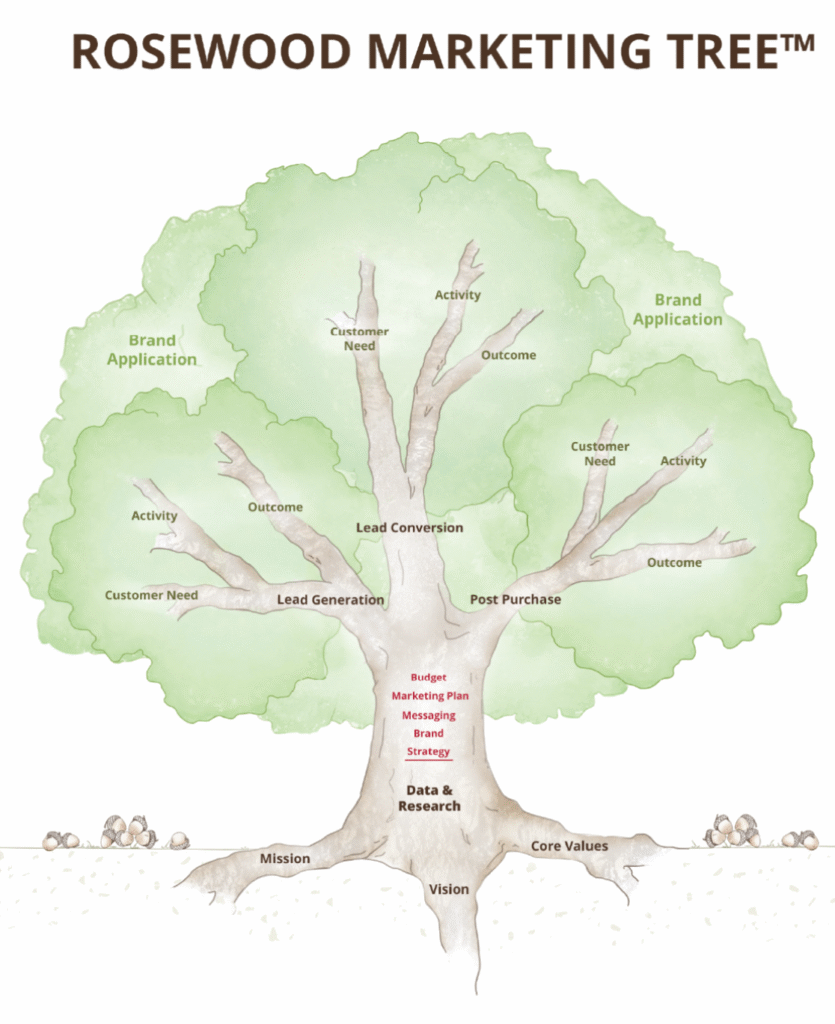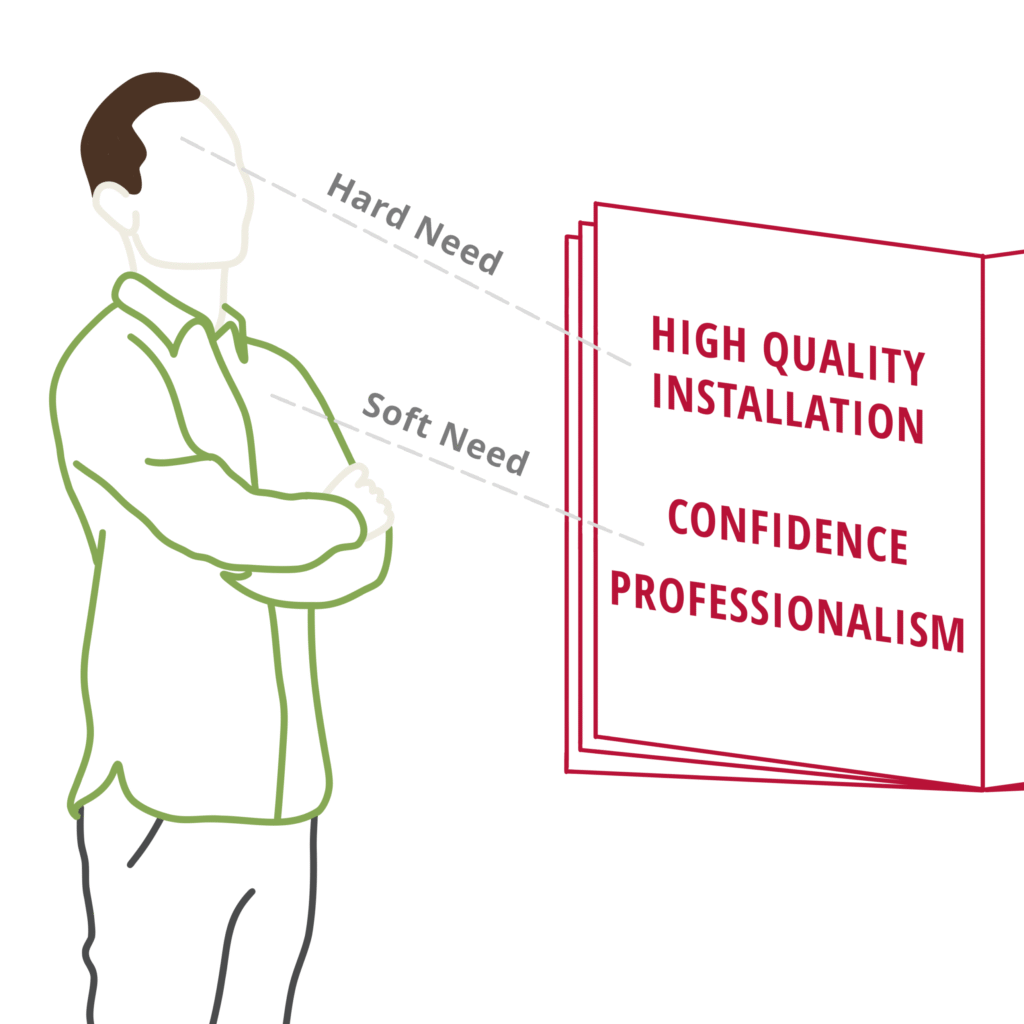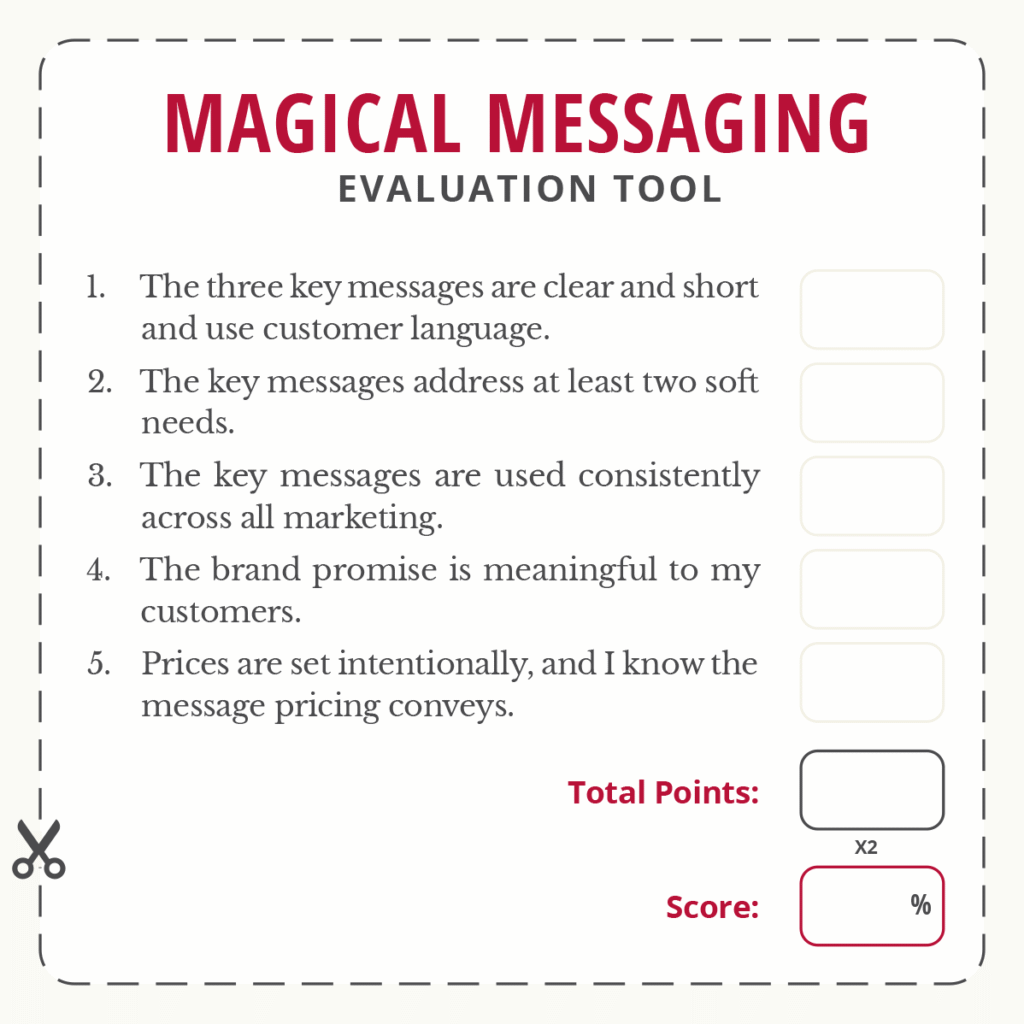
“That was too easy—almost magical,” business owner Eric commented to Lonny, his production manager. “We wanted the phone to ring; we needed orders. A few months ago, we were practically out of work. Now, we have the projects I had been only dreaming about in the shop and on the calendar. I can hardly believe that so little effort produced such a fast turnaround!”
“Well, you must have done something right. Nothing happens by magic, at least not in my world,” commented Lonny dryly from where he was watching another sheet of metal roll down the conveyor. “So what did you do?”
“Remember how we identified our two main customer personas, homeowners and contractors, for standing seam metal roofing? For the last marketing project, I got a list of all the registered roofing contractors in our two counties, wrote them a letter, inserted our flier, and hand-addressed the envelopes.
“That’s how we got in touch with Legacy Group, the company that has given us the last few large orders and where all these massive quotes are going. They’re the top contractor down in the Stock Farm area. Huge houses! Deep pockets! Legacy Group has already secured the trust of these people and works almost exclusively in that upscale community. Legacy Group has approximately 20 men on their own crews, plus they subcontract work, too.
“Legacy had wanted to get into standing seam roofs. Customers were asking for it, but Legacy didn’t have the expertise to do it, and they didn’t have any subcontractors whom they could trust. When I sent out the message offering the most durable and attractive metal roofing options available, along with the installation know-how, on-site training, and tools to get the project done … Well, it was exactly what Legacy Group was looking for. They knew they should be offering standing seam, but didn’t know how to launch it. They didn’t know how to sell, how to price, how to install, or what tools were needed. It was just a little too new in their area. So our offer to give support with the product was exactly what they needed, and no one else around here is offering that. I had no idea what magic a little envelope could do!”
“So that’s what’s behind these huge orders lining up,” Lonny replied. “But hey, it wasn’t the little envelopes that did the magic, it was the message inside the little envelope, right? Think about it. You offered a quality product with the support to go along with it. Who else would have offered on-site training, tools, know-how…? You even offered to sit down and discuss it all over lunch! The magic was in the message, plain and simple!”
“You know,” Lonny continued, “we’d better take off our coats, roll up our sleeves, and get to work! If we fail to deliver on this message, “POOF,” we’ll be out of business like magic, too!”
“That’s right, “ agreed Eric. “You know, I’m going to read that letter in our next company huddle on Monday morning. It will remind all of us what we need to focus on. Let’s roll!”
Magical Messaging Defined
You were just reading about magical messaging. It’s when a company accurately communicates to the right and ready audience about what the company can do for them and how it does it. Magical messaging is what moves a client into a buying decision.
It’s your company’s mission in meaningful language that your prospects can understand. They connect to this simple message and become your customer because you have assured them you can address their needs and wants.
Mark’s Pole Barns’ message is “More wood, more strength.” Kentucky Fried Chicken broadcasts, “Finger lickin’ good.” Airbnb says, “Belong anywhere.” FedEx: “When it absolutely, positively has to be there overnight.” These are examples of a short message in simple language, directed toward people looking for a particular product or experience.
Magical Messaging Created and Communicated
Effective messaging is straightforward. Donald Miller, StoryBrand founder, says, “Clear is more important than cute.”
Upscale homeowners want durable and attractive roofing, and contractors need support. When you know the need and know you can fulfill it, say so with well-chosen words and show it with high-quality photography.
Eric’s roofing materials company communicated this through a color brochure with pictures, short messages, and a longer story of who they are and what they can do for roofing contractors. An envelope and a stamp carried the magic to the correct target audience, and the rest is history.
How do you know what will connect with your target audience? Here is a key. Listen to what your happy customers say when they share their success stories about your product or service. Look for themes and repeated phrases. Then use their own words and phrasing in your marketing. Then others like them will understand and connect deeply with the message.
Try to understand both the hard and soft needs of your client. A contractor needs high-quality installation of standing seam metal roofs (hard need). Eric had that covered. But the contractor also needed confidence and professionalism, especially with upper-class clientele (soft need).

A message in both short form and long form is useful. The short form is applicable in headline-type promotional material, when the message space is brief. A business card or a flyer doesn’t have space for a story. However, a website, brochure, or sales presentation has space for more information: your business backstory, a customer’s testimonial, or other stories to communicate vital information to your potential customer.
Be sure to create your story not only with words, but also with meaningful pictures and appropriate aesthetics: a solid logo, compelling graphics, and carefully curated font types.
Be consistent with your message. If it darts about without a clear direction, your message will be confusing. Refine it to three key points and align all your marketing with one of those key points.
These three key points of your message distill the best benefits of your products and services into a quick summary for your prospects. They must be accurate and deliverable. Don’t overpromise and underdeliver. They should also address the hard and the soft needs of your clients. Think of your prospects’ pain regarding their problem and their desired progress: aim there. Keep thinking, planning, testing, and refining until you have found the magical message that delivers results.
Brand Promise and Guarantee
Messaging, when fully formed, contains a brand promise component. An outstanding example of a brand promise is Domino Pizza’s message: “Pizza in 30 minutes or it’s free.” Another example is Alaska Airlines’ promise that if your bags aren’t on the carousel within 20 minutes of arriving at the gate, you get 2,500 miles free or a $25 voucher towards your next flight. These messages are brand promises of timely delivery of pizza and baggage—no doubts remain. They clearly communicate what customers can expect when dealing with these companies.
But the message doesn’t stop there; it goes on to give a guarantee. A guarantee is what your company will do if you don’t deliver on your promise. It communicates that you are quite serious about your message. Domino’s message delivers both a promise and a guarantee: “Pizza in 30 minutes or it’s free.” That’s a short message packed with meaning.
Some business owners object to giving a guarantee. They might feel that a customer will take advantage of them by some devious application of their well-meaning guarantee. Or they may think that since they always do what is promised, a guarantee isn’t necessary.
If you are going to fulfill a guarantee anyway, then tell them. It clearly sets expectations, builds trust, and reassures the customer of your trustworthiness.
A clearly stated guarantee also sets legal boundaries on what a customer can demand, which can be crucial in some cases. With no guarantee, there are no bounds for what a company may be held liable for. A guarantee communicating “Parts and labor for 5 years,” or “Parts only after 5 years,” communicates what a customer can expect if things don’t work out as promised within a certain time frame.
Price and Its Message
Price is the single largest indicator of value. You know full well that a high price can turn people away. But did you know that folks sometimes move on because the price is too low? What these people are looking for is quality: they don’t want an $800 riding mower; they want one that lasts for at least 15, maybe 20 years. They are willing to pay three times the amount for a high-end living room ceiling fan because they want three times the peace of mind that a Walmart fan can give. They expect the kitchen remodel to be well above the average price and evaluate prices accordingly, because they want the sizzle an average-priced kitchen won’t provide.
Nothing shouts a louder message about your product than price. The message of price is so significant that the following article will address it exclusively. In the meantime, here’s the lay of the land on price:
When determining price, conservative-minded businessmen tend to set the lowest possible price, even when they know the product or service offers far more value than other options in the marketplace. This might actually turn customers away.
Many products and services have untapped potential for value-oriented pricing rather than strictly cost-based pricing. You might be able to offer the service (or couch) for free, but because it conveys low or no value, folks drive by without stopping.
With the backdrop of messaging rightly considered, pricing is usually a bit more complex than “cost plus,” or some other similar mathematical formula.
Trying to sell an $800 mower for $8,000 isn’t going to work. The value must be there and be recognizable to command a higher price. But accurately pricing for value sends the message your prospective customer is expecting and seeking.
Magical Messaging at Mike’s Meats
Here’s another peek into Mike’s yellow notepad, which contains his growing list of touchpoints for communicating his message and translating it into customer experience.
Here is an evaluation tool to help you assess the health of your messaging.
Here’s another peek into Mike’s yellow notepad, which contains his growing list of touchpoints for communicating his message and translating it into customer experience.
Core message:
- 1. “Your meat is your meat.”
- 2. “Flavor to rave over.”
- 3. “Re-live your memories.”
Slogan:
- “Delicious meats are the best kind of memory.”
Touch point applications:
- 1. Hunting and farming themed decor/vibe in retail space.
- 2. Work order checklist showing who did what and when, sent with finished product. Identification tags affixed to the carcass in the customer’s presence.
- 3. Large windows between the retail space and the work floor area.
- 4. Free recipe / seasoning recommendations for every cut of meat.
- 5. Consistent warmth and smiles, coupled with an invitation for the customer’s story behind the animal.
- 6. Packaging detail: free boxes with business name, logo, and slogan. Full-color, personalized labels, such as “Bob’s Elk Steaks” and “Jr’s Wild Steer Sticks.”
- 7. “Your meat is your meat” guarantee or it’s free!
- 8. Employees expected to engage with customers about the story behind the meat, whether from the home farm or the wild outdoors. Notable stories and pics displayed in retail space and annual calendar (#11).
- 9. Tri-fold brochure with pictures available on counter that tells our story and gives our “three uniques.” Pictures of ready-to-eat meat only. Special cuts can be raw.
- 10. Free nibbles of snack sticks for every customer.
- 11. Annual oversized, high-quality calendar featuring our customers’ trophies from both farm and field. Monthly recipe with “how-to” tips.
- 12. Employee training aligned with these touchpoint applications.
For anyone and everyone on the team…
- 1. Cheers and rewards for those whose work consistently aligns with our core message and touchpoint applications. Awarded every Thursday afternoon at 4:30 pm.
- 2. Cash bonus incentives for ideas that increase the vibrancy of our core message, when proven to work after a three-month time period. Example: When George suggested making kabobs with scraps of otherwise high-quality meats.
- 3. $500 first-place award, $250 second-place, and $100 third-place for the company-voted best customer story captured.

Evaluate Your Business
Here is an evaluation too to help you assess the health of your messaging.
